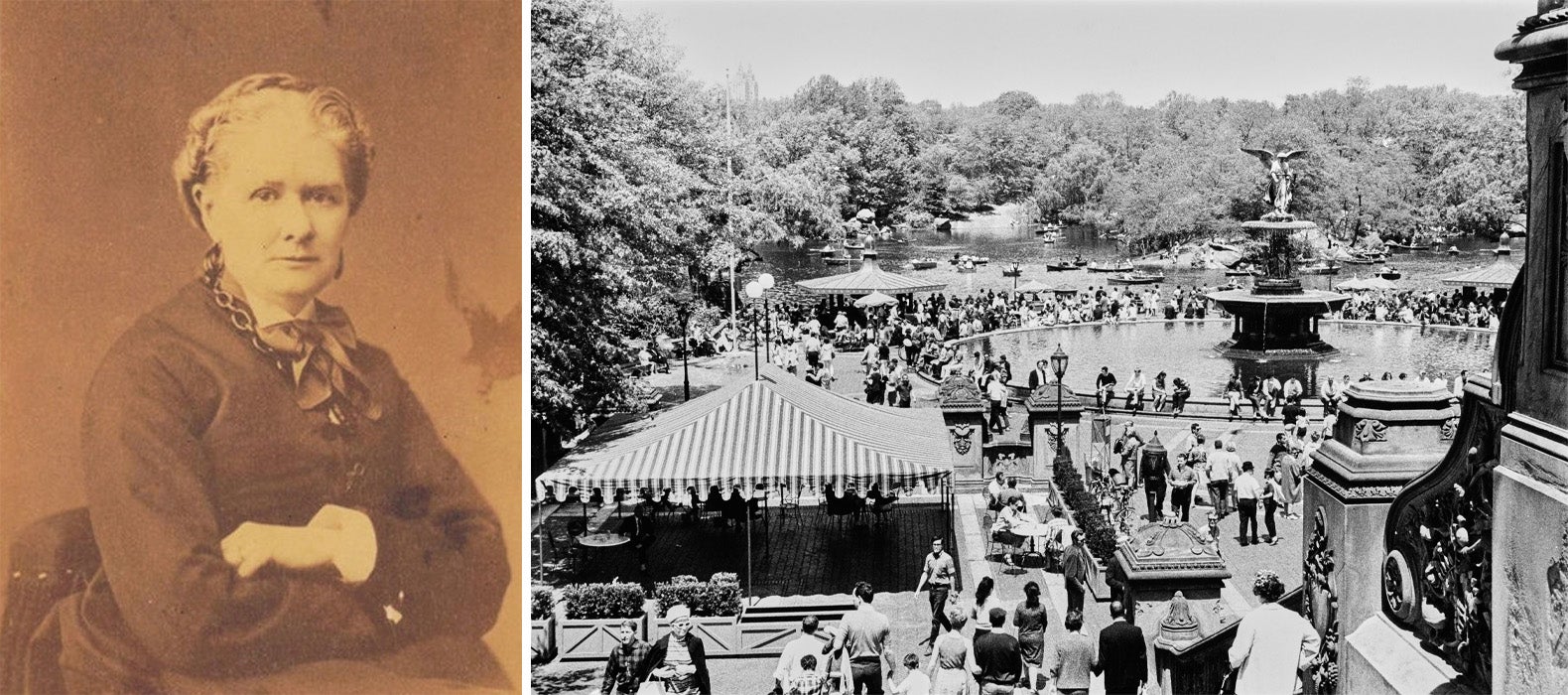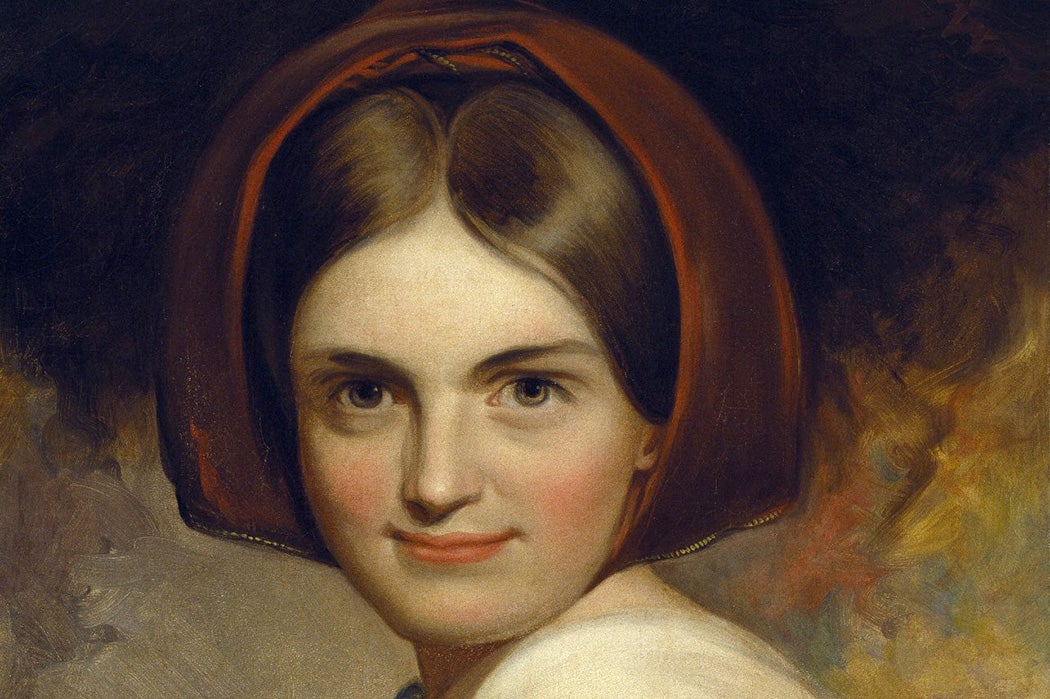When, along with a group of largely queer female artists, Charlotte Cushman “retired” to Rome in 1852, she was one of the best-known celebrities in the United States and Europe. In playing both female and male theatrical roles, she developed a fame that allowed her unprecedented freedom in gender expression and sexuality: she frequently wore men’s clothes and was open about her romances.
The Jolly Bachelors, as this crew of expats was known, had “their love triangles and their relationship fallouts, but they also supported each other,” Tana Wojczuk tells me. She’s the author of Lady Romeo: The Radical and Revolutionary Life of Charlotte Cushman. They
had amazing salons where they would share ideas. They would engage deeply with classical art, which was really important to them at the time. They saw themselves as part of this global tradition, not just as part of an American tradition or European tradition.
For her part, Cushman supported marginalized artists, such as African American and Native American sculptor Edmonia Lewis, whose Forever Free features a man holding up his wrist, which is encircled by a broken shackle. His other hand rests on the shoulder of a woman kneeling in prayer. Sculpted in 1867, just four years after the Emancipation Proclamation, Forever Free represented “the birth of the African-American ‘family’ after slavery,” writes Kirsten P. Buick.
Weekly Newsletter
Cushman traveled among the cultural and political elite. She was a regular guest in the home of Secretary of State William Seward and met with Abraham Lincoln (who said he wished to see her play Lady Macbeth; he eventually did). The rest of the “white, marmorean flock,” as Henry James condescendingly described some of the Jolly Bachelors, was just as trailblazing: Emma Stebbins sculpted Angel of the Waters which sits atop Central Park’s Bethesda Fountain (the earliest commissioned public artwork by a woman in New York City), and Sara Jane Lippincott (pen name Grace Greenwood) was the first female journalist hired by the New York Times.
In spite of their impressive individual achievements, the influence of the Jolly Bachelors has been largely forgotten. In Cushman’s case, this may be due to the ephemeral nature of theater, but likely also results from the suppression and marginalization of artists who defied social mores.
A descendant of Mayflower pilgrims, Cushman embarked on a performance art career as a teenager, soon after her father’s untimely death. As Gamaliel Bradford writes,
Her early aspirations were musical, and she hoped that her powerful contralto voice might be developed to operatic quality. Her disappointment as to this was a bitter blow, but incidentally she had discovered that, though she could not sing, she could act.
She began performing in her hometown of Boston in 1835, followed by a stint in New Orleans before she settled in New York City. Opposite her younger sister, Susan Webb Cushman, who took Charlotte’s advice to pursue acting after a failed marriage, she memorably played Romeo in Shakespeare’s tragedy, taking on stereotypically masculine attributes, such as courage and sword-fighting, while also expressing facets of feminine vulnerability, weeping at the loss of Juliet, for instance.
“She had an interesting rhetorical effect on her audience, in addition to being a powerful physical performer,” says Wojczuk. “When she played a man, for example, Romeo, critics wrote about it as if she was the epitome of manliness. And what was so interesting is that they said she was a better man than most men.”
That a woman would take a male role, particularly a romantic one, during an era of stringent gender divisions wasn’t uncommon. Literary scholar Anne Russell explains that
women’s performances of tragic heroes broke long-established conventions of dramatic representation in the British theater and in the process interrogated many assumptions about character, gender, genre and performance. Although a considerable number of reviewers criticized crossdressed tragic performances as immoral and lacking in taste, enough audience and reviewers were receptive to crossdressed performances that a significant minority of actresses chose or were assigned male roles.
The works of Shakespeare, featuring the young Montague along with icons like Hamlet and Macbeth, were particularly ripe for interpretation by female actors. Cushman could easily mimic the accents of the Bard’s characters and was able to “enter these upper echelons of fine arts,” says Wojczuk. She also benefited from the “great leveler”—incredibly popular texts which attracted enthusiastic audiences.
Cushman became a sensation and relished the acclaim. As she described in a letter, quoted by Bradford, she celebrated the “particulars of my great and triumphant success of last night, of my reception, of being called out after the play, and hats and handkerchiefs waved to me, flowers sent to me, etc.”
The theater also provided her opportunity for romantic exploration. Matilda Hays, a British writer and translator and part-time actress, briefly starred as Juliet opposite Cushman in England before they became a couple. Once together, they moved to Rome in pursuit of greater romantic freedom. There, Cushman befriended fellow expat and sculptor Harriet Hosmer, known for pioneering a technique that turned limestone into marble and who many believe came between Cushman and Hays.
In Italy, Cushman played the roles of “patron, agent, housemother and friend,” Jean Gordon writes in American Quarterly. But “she really demanded a lot from her partners,” explains Wojczuk. “She kept coming out of retirement, she traveled a lot. [Her partners] were usually expected to travel with her and put their own careers on hold to support her. While at the same time, she was drawn to women who had careers and who were ambitious.”
As she grew more famous, Cushman moved up in the world—quite literally—coming to reside on Via Gregoriana, the street on which stands the famed Villa de Medici, and “centered herself in this area that was known for symbols of power and the arts,” says Wojczuk.

Soon, Cushman found a creative—and romantic—equal in Stebbins, who came from a wealthy New York family and who might have played a role in Cushman’s breakup from Hays. Cushman saw her relationship with Stebbins as a marriage, asserting that she “wore the badge upon the finger of my left hand.” She described Stebbins as
high, true, noble and self-sacrificing […] I love her dearly, so truly that anything which makes her unhappy makes me so—she is a part of me—as much as a life of eight years of the most intimate association can make her.
Stebbins’s approach to art was different than that of her contemporaries. Unlike Hosmer, who was arguably motivated by commercial imperatives, making dozens of copies of her famous Puck statue, for instance, Stebbins focused her talents on representing the working class, says Maria Teresa Cometto, the author of Emma and the Angel of Central Park (Bordighera Press). And when Charles August Heckscher commissioned Stebbins to advertise his shipping and coal mining businesses, she sculpted Commerce and Industry. Depicting a sailor and a miner in the neoclassical style normally reserved for great figures, it demonstrated her reverence for the working class.
Stebbins’s The Lotus Eater, inspired by Alfred Lord Tennyson’s Odyssey-derived poem, was a similarly personal undertaking.
“In the title and attributes of her figure,” writes Elizabeth Milroy in Archives of American Art Journal, “Stebbins referred to feelings of self-exile and impotent homesickness, revived by the poem, that she herself no doubt experienced as an expatriate.”
Stebbins’s masterwork was Angel of the Waters, the centerpiece of the Bethesda Fountain, commissioned around 1863. (Her brother chaired the park’s Committee on Statuary, Fountains and Architectural Structure.) Cushman was present in the studio as Stebbins worked on the commission, and lore holds that Cushman in fact inspired the angel’s countenance.
Around 1858, Cushman fell for Emma Crow, an eighteen-year-old actress who later married Cushman’s nephew. Indeed, it’s thanks to Crow that we can today read some of Cushman’s correspondence; Cushman burned most of the rest. Her writings paint a rich portrait of her life and her relationships with other women. This is especially important given that so much of the output of Cushman and her Jolly Bachelors has been lost. It’s impossible to watch a Cushman performance, obviously, and all that remains of Stebbins’s The Lotus Eaters, for example, is the bust. This makes it difficult to construct a more encompassing narrative of queer artistic history, particularly for this cohort of American women in Europe seeking greater professional and sexual liberty there.
When the Jolly Bachelors were written about, their sexual identities were ignored, as Lillian Faderman describes in “Who Hid Lesbian History?”
“Where biographers have been too scrupulous to bowdlerize, they have nevertheless managed to distort lesbian history by avoiding the obvious,” Faderman writes.
Sometimes this has been done to “save” the reputations of their subjects (for example, Emma Stebbins, Alice B. Toklas and Edith Lewis were the “companions” of Charlotte Cushman, Gertrude Stein and Willa Cather) although illicit heterosexual affairs are seldom treated with such discretion by even the most sensitive biographer.
Though limited, the available artifacts of this period help researchers piece together these women’s lives, like the scrapbook of Stebbins’s sketches that her sister organized or Cushman’s costumes, preserved in arsenic. Wocjzuk describes a record from an audience member at one of Cushman’s final performances.
“She was so sick with cancer, she couldn’t even stand. She would do many of the parts in Macbeth, basically a one-woman show from a chair,” says Wocjzuk. “This person wrote that he could see every thatch on the roof, every hair on the dog’s back. He could actually envision the entire world just from her presence and her voice.”
Stebbins, too, continues to undergo re-examination, whether in a recent obituary in the “Overlooked” series in the New York Times or Cometto’s book, originally published in Italian. Cometto found no information in Rome about the Jolly Bachelors. (As she says, “The only newspaper in Rome under the Pope was the one controlled by the Vatican itself, so it didn’t talk about transgressive American women.”) And even the story of queer love behind the Bethesda Fountain is little known.
Still, Cometto, who regularly passes by the statue, is delighted that it’s become a backdrop for engagements and marriage photos. It also features prominently in the epilogue of the play Angels in America. The lives of the main characters—ravaged by HIV/AIDS—discuss the water’s healing powers. Says one,
This angel. She’s my favorite angel. I like them best when they’re statuary. They commemorate death but they suggest a world without dying. They are made of the heaviest things on earth, stone and iron, they weigh tons but they’re winged, they are engines and instruments of flight.
Playwright Tony Kushner didn’t know about Stebbins’s sexuality when he wrote the scene. Still, it’s a testament to the passion of the statue’s creator, who along with the other Jolly Bachelors, never ceased in molding a world that allowed them to live as their truest selves.







